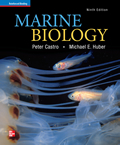1 epipelagic neritic zone.A) True B) False 2 A) Throughout the photic zone. B) In the photic zone of neritic waters. C) In the photic zone of oceanic waters. D) Only at the air-water interface. 3 A) Phytoplankton like diatoms. B) Megaplankton like jellyfish. C) Macroplankton like krill. D) Meroplankton like fish larva. 4 A) True B) False 5 A) True B) False 6 A) baleen B) Teeth C) Mucus D) Neumatocysts 7 A) Trichodesmium .B) Diatoms. C) Dinoflagellates. D) Sargassum .8 A) filter-feeding. B) Creating water currents that draw in cells. C) Using their antennae to strain the water. D) Hopping on top of their prey. 9 holoplankton spend part of their life cycle in the plankton and their adult lives on the sea floor.A) True B) False 10 A) They are eukaryotic. B) They are multicellular. C) They belong to the Kingdom Animalia. D) They graze on other types of plankton. 11 A) True B) False 12 A) Meroplankton. B) Holoplankton. C) Picoplankton. D) Phytoplankton. 13 A) Are chordates, like the tunicates. B) Are gelatinous medusae. C) Start life as bottom-dwelling larvae. D) Use tentacles to catch prey. 14 A) Flat shape B) Storing oil C) Using bubbles D) Streamlining 15 A) True B) False 16 A) Stop migrating if predators are not present. B) Come to the surface by day. C) Rarely live at more than 10 m. D) Feed while at depth, not at the surface. 17 A) True B) False 18 A) True B) False 19 A) True B) False 20 A) An annual peak in the summer, when light is most optimal; and an annual low in the winter, when light, but not nutrients, is limiting. B) An annual peak in the spring, when nutrients and light are both sufficient; and an annual low in the winter, when light, but not nutrients, is limiting. C) An annual peak in the summer, when water temperatures are most optimal; and an annual low in the fall, when light, temperature and nutrients are limiting. D) An annual peak in the winter, when nutrients may be high; and an annual low in the summer, when light and nutrients are limiting. 21 A) Nitrates to make nucleic acids B) Lipids for floatation C) Myoglobin to store oxygen D) Phosphates for the production of chlorophyll. 22 A) Pelagic fishes usually swim in circles. B) These fishes have no adaptations to avoid solid physical structures, such as walls. C) The fishes prefer to swim away from viewers. D) Circular tanks provide better hiding place than square ones. 23 A) Swim bladder. B) Gas float. C) Oily liver. D) Exclusion of heavy ions. 24 A) True B) False 25 A) True B) False 26 rete mirabile is an arrangement of blood vessels used to:A) Increase swimming speed B) Increase floatation C) To reduce heat loss D) To facilitate vertical migration 27 A) 10 km/hr B) 25 km/hr C) 50 km/hr D) 100 km/hr 28 A) Stiff fins. B) Many scales. C) A high, narrow tail. D) Finlets. 29 A) True B) False 30 A) Viruses and phytoplankton. B) Phytoplankton and carnivorous copepods. C) Krill and whales. D) Small fishes and tuna. 31 Marine snow refers to the large amount of disolved organic material that falls from the epipelagic zone in the oceans.A) True B) False 32 A) Nitrogen B) Oxygen C) Phosphorous D) Calcium 33 A) True B) False 34 A) Diurnal heating B) Ekman transport C) The Southern Oscillation D) Oceanic stratification 35 A) The water is rich in nutrients. B) The water is cold. C) Upwelling occurs year-round. D) Fishing is usually good. 36 A) An increase in upwelling in the southeastern Pacific. B) Lessening of storms. C) An increase in warm-water fishes. D) Increased rainfall in California 37 A) Release of poisons into the water. B) Harboring bacteria that cause cholera. C) Sore throats and eye irritation. D) Water stratification. 38 Red tides : will most adversely effect which of these fisheries?A) Lobstering B) Anchovy C) Tuna D) Clams and mussels 39 A) One that lasts all year B) One in summer C) Two: one in spring and one in fall D) Four: one per season





